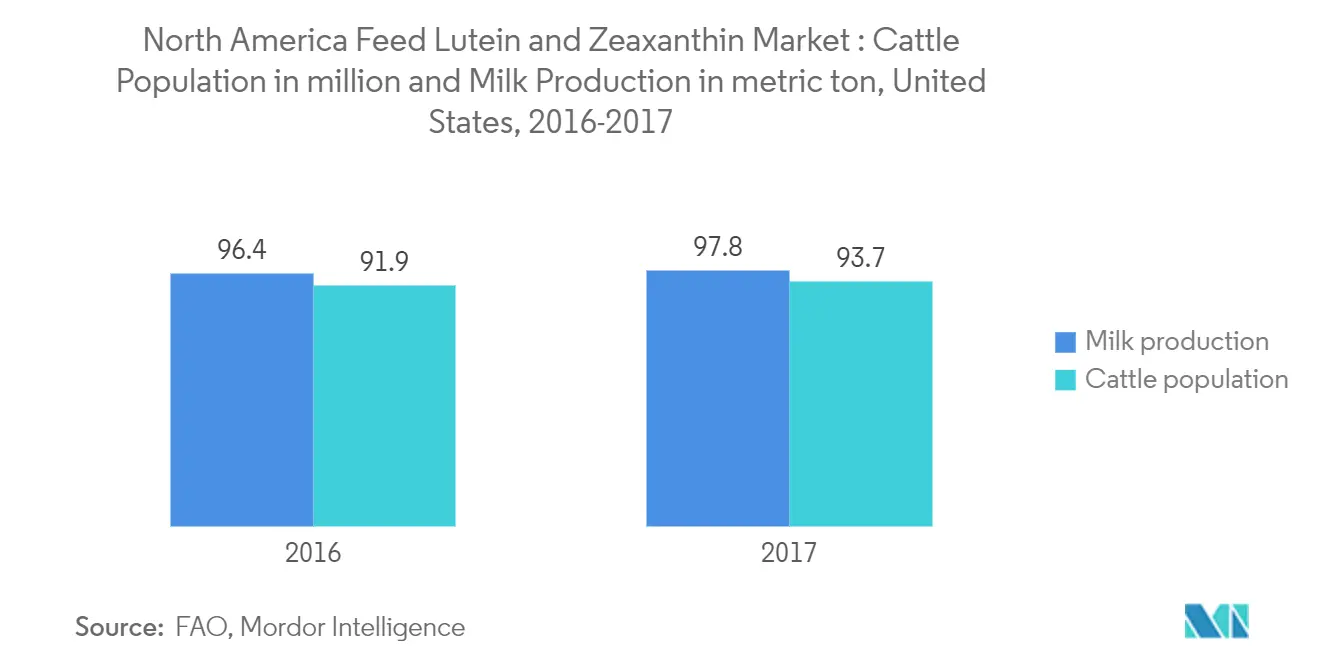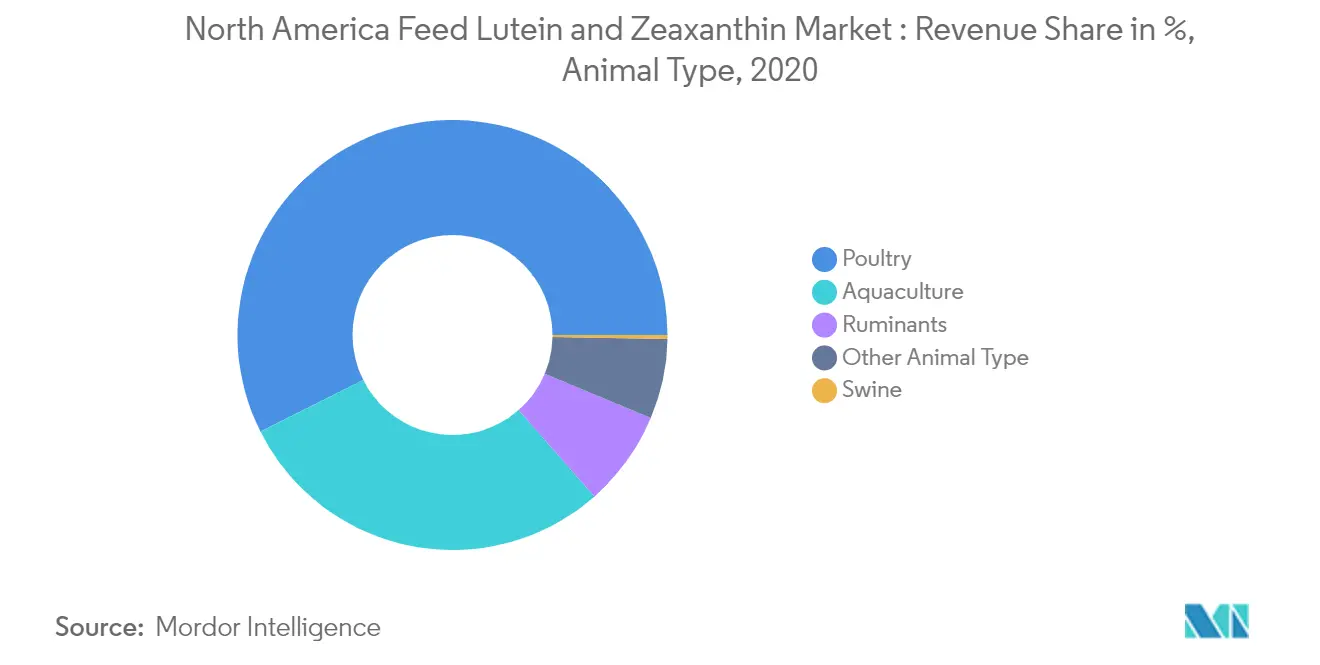Market Trends of North America Feed Lutein and Zeaxanthin Industry
This section covers the major market trends shaping the North America Feed Lutein & Zeaxanthin Market according to our research experts:
Industrialization of Livestock Industry
According to the World Bank, the industrialized meat production is growing six times faster than traditional meat production methods. With the increasing mass production of meat, a shift is observed toward landless meat production facilities. For instance, in the United States, in 2017, the milk production had increased to 97.8 metric ton in 2017 from 96.0 metric ton in 2008. However, the Innova cattle population was reduced to 93.7 million in 2017 from 96.2 million in 2008. Thus, the livestock production industry is moving toward consolidation. For example, in the United States, the growth of concentrated animal feed operations (CAFO) has occurred rapidly during the past decade, and similar models are becoming popular in other parts of the North America, with the help of government and other financial institutions.
In the marketing of poultry and fish products, appearance and color are of central importance for evaluating quality. Egg yolk coloration is, to a large extent, a matter of individual preferences. Therefore, the use of feed additives, such as lutein and zeaxanthin, enables producers to safely control the color of the egg yolk and the broiler skin. This enhanced appearance of the animal produce enables the livestock producers to effectively market their products. Therefore, the increasing industrialization has led to the indoor animal raising systems, coupled with the rising standards for the animal produce.

Poultry Segment Dominates Market
The poultry segment is one of the largest consumers of feed carotenoids, including lutein and zeaxanthin, due to their benefits. The use of feed carotenoids in the production of poultry eggs is a major driving factor for the market. The health benefits associated with lutein and zeaxanthin in the egg are driving the consumption of eggs in the United States. This is changing the consumer demand with respect to the color of yolks, which acts as proof of more carotenoid presence in the egg from the perspective of the consumer.
There is a growing demand for poultry meat in the region. For instance, as per OECD data, the per capita poultry meat consumption in the United States increased from 48.4 kilogram in 2016 to 50.9 kilogram in 2020. Hence, the growth in the consumption of poultry meat is projected to increase poultry feed production, which will lead to the demand for quality feed lutein and zeaxanthin.
Synthetic xanthophylls (lutein and zeaxanthin) are used as feed additions in chicken farming to achieve optimal coloration of broiler skin and egg yolk. Color is a significant attribute and selection criterion for customers when it comes to food choices. Currently, to fulfill the high-quality standards, poultry producers are focusing on poultry diet and feed additives that increase the feed intake of poultry that increased the inclusion of carotenoids, including lutein and zeaxanthin in the poultry feed, in the region. Thus, in poultry, feed lutein and zeaxanthin play a vital role in enhancing the color of egg yolk and quality of meat, which is expected to drive the market growth during the forecast period.

